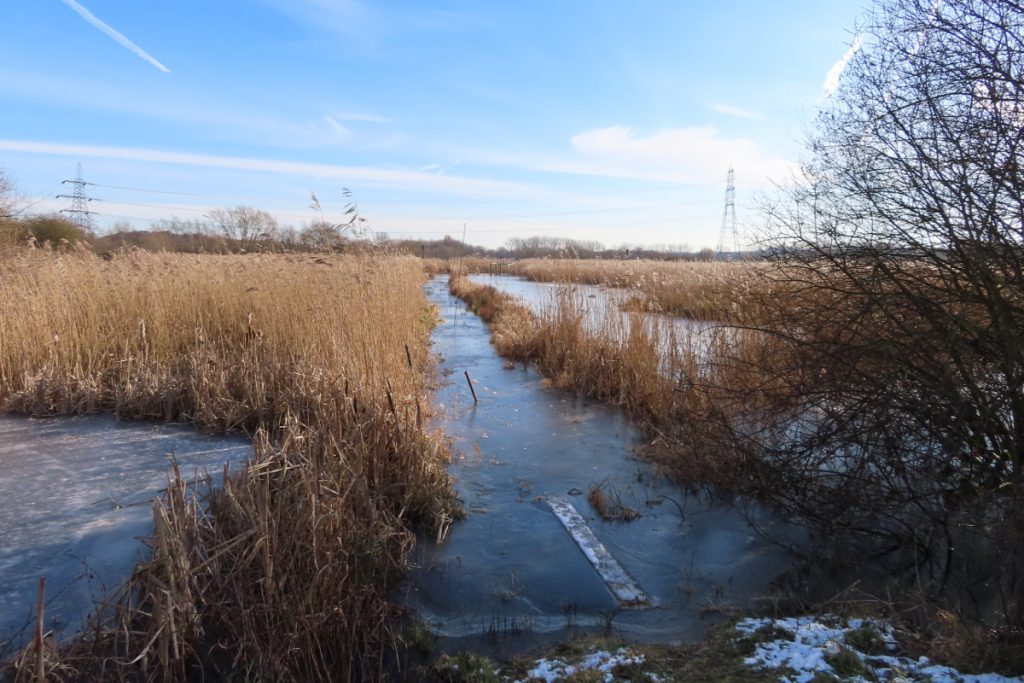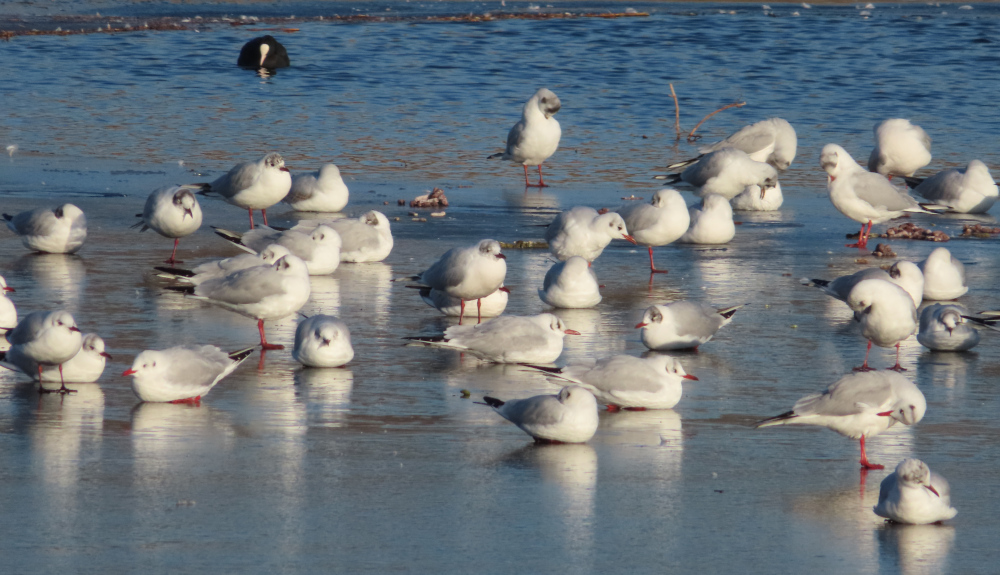Observations

January-February 2021 – a time of water and ice
With the second Coronavirus lockdown in force, the largely ageing population of RMRG stalwarts tended to follow Government advice and stay at home. Those who did venture to Rye Meads found it very wet indeed, except during the week of Arctic weather from 7th to 14th February, when it was frozen solid. Furthermore, access was still confined to just the reserves north of the Toll Road.
This certainly impacted wildfowl numbers, partly because of the wide availability of feeding locations away from the lagoons whilst it was wet, and lack of open water whilst frozen, and partly because it was impossible to access the flooded meadows to count wildfowl adequately.
Best bird of the period was the lone Bittern which showed itself briefly in early January. Most wildfowl numbers rose considerably after the thaw in February, although still well below typical levels in past years: Gadwall numbers rose to 66, Tufted Duck to 46, Pochard were at 20, and Lapwings loafing on No 1 Lagoon reached 252. One day we recorded 75 Wigeon passing over, and numbers of Snipe had increased in the Meadows to 132, the best count for six years, with 7 Jack Snipe – indicative of the beginning of a spring movement perhaps?

Roost flight counts of gulls in January gave 860 Black-headed Gulls and 60 Common Gulls, and the usual build-up of Black-headed Gulls returning to the breeding colony was already under way by the end of February, with palpable excitement (theirs, not ours) – there were already 287 hanging around on every available island in the North Lagoons.
We always fear for our vulnerable birds during prolonged ice periods, so it was pleasing to record two Kingfishers and a Barn Owl after the thaw. By late February in spring-like weather there were six Red Kites and 13 Buzzards all anxious to proclaim their territories.
Winter thrushes as usual were more numerous early in the year, when the Hawthorns still carried plenty of berries – up to 50 Redwings and seven Fieldfares and up to 20 Blackbirds were regularly counted.
The three Stonechats seen intermittently in January also survived the frosts, with one remaining by the end of the period.
Winter roosts yielded maxima of 48 Yellowhammers, 18 Reed Buntings and 15 Meadow Pipits.
Three Ravens flew over one February day, still rare enough at Rye Meads to give a fillip to the lucky observers. A female Blackcap was seen once in January, and one or two Chiffchaffs were regular through January, with at least one still in residence at the end of February.
Still an unusual bird at Rye Meads, a Mistle Thrush was heard singing at the Works in late February.
On the non-avian front, a positively scary 42 Brown Rats were seen one day in January, and up to seven Muntjacs were counted. Finally, a Great Diving Beetle was found by, one trusts, a land-based observer in late February.
